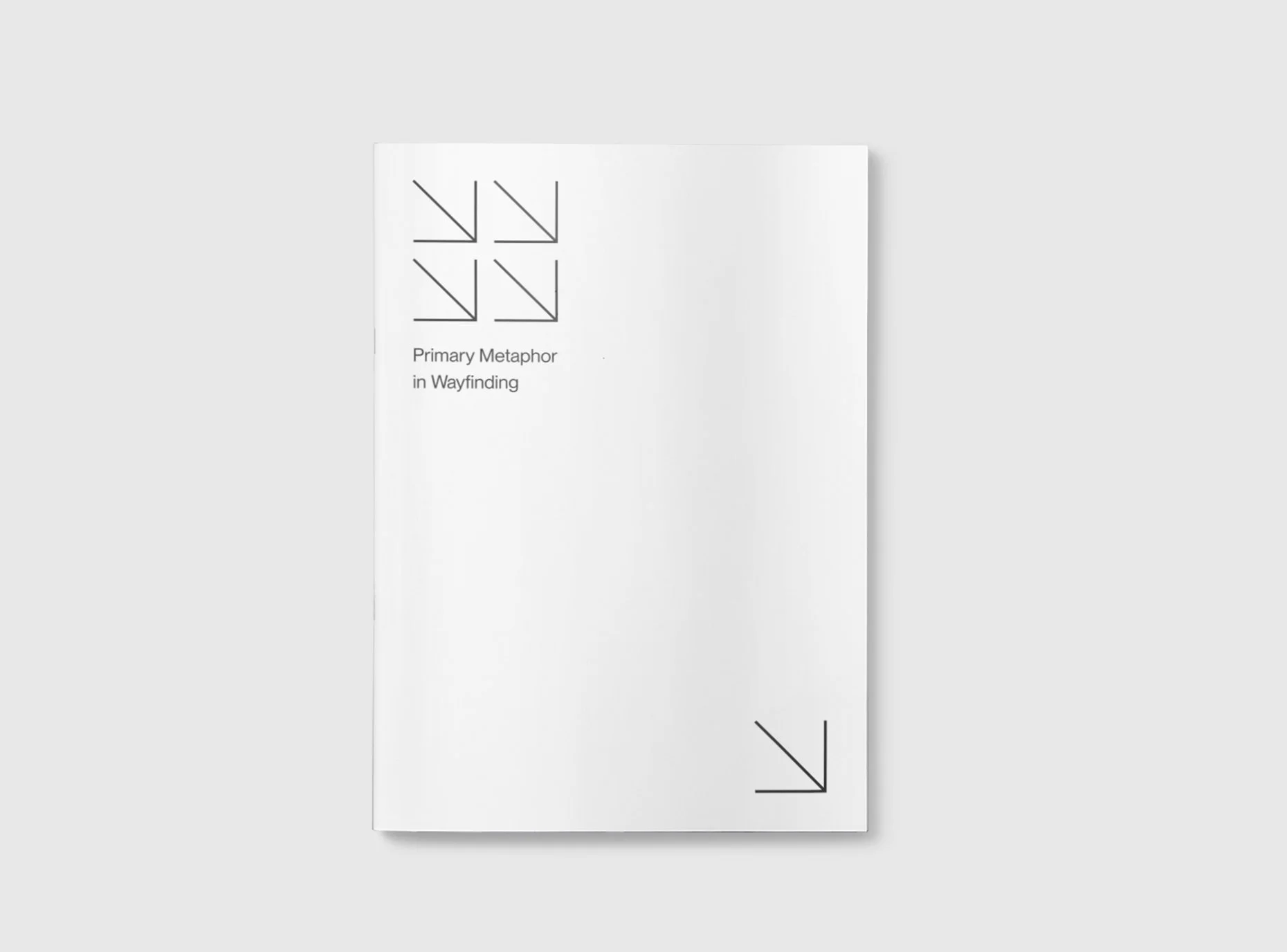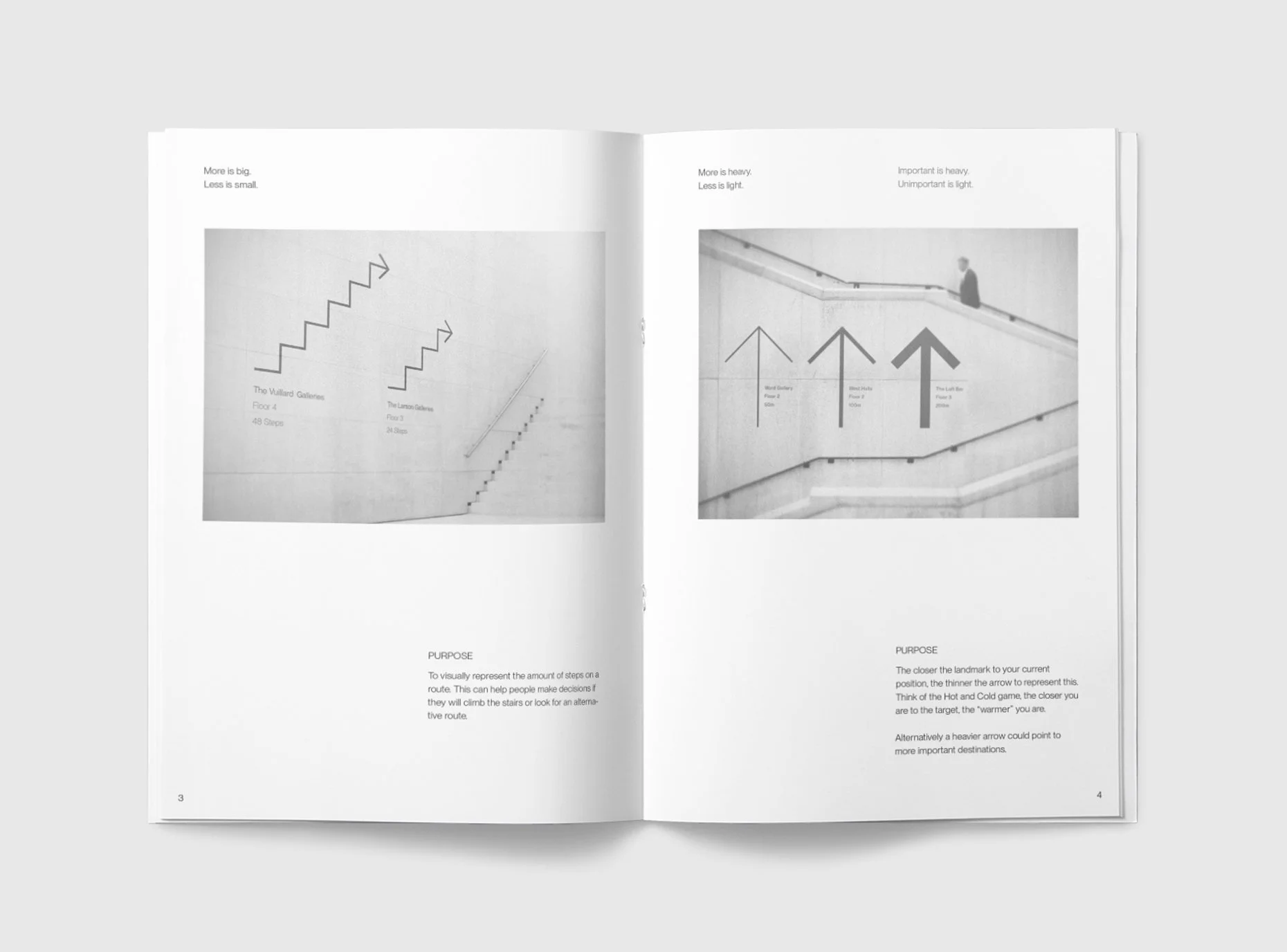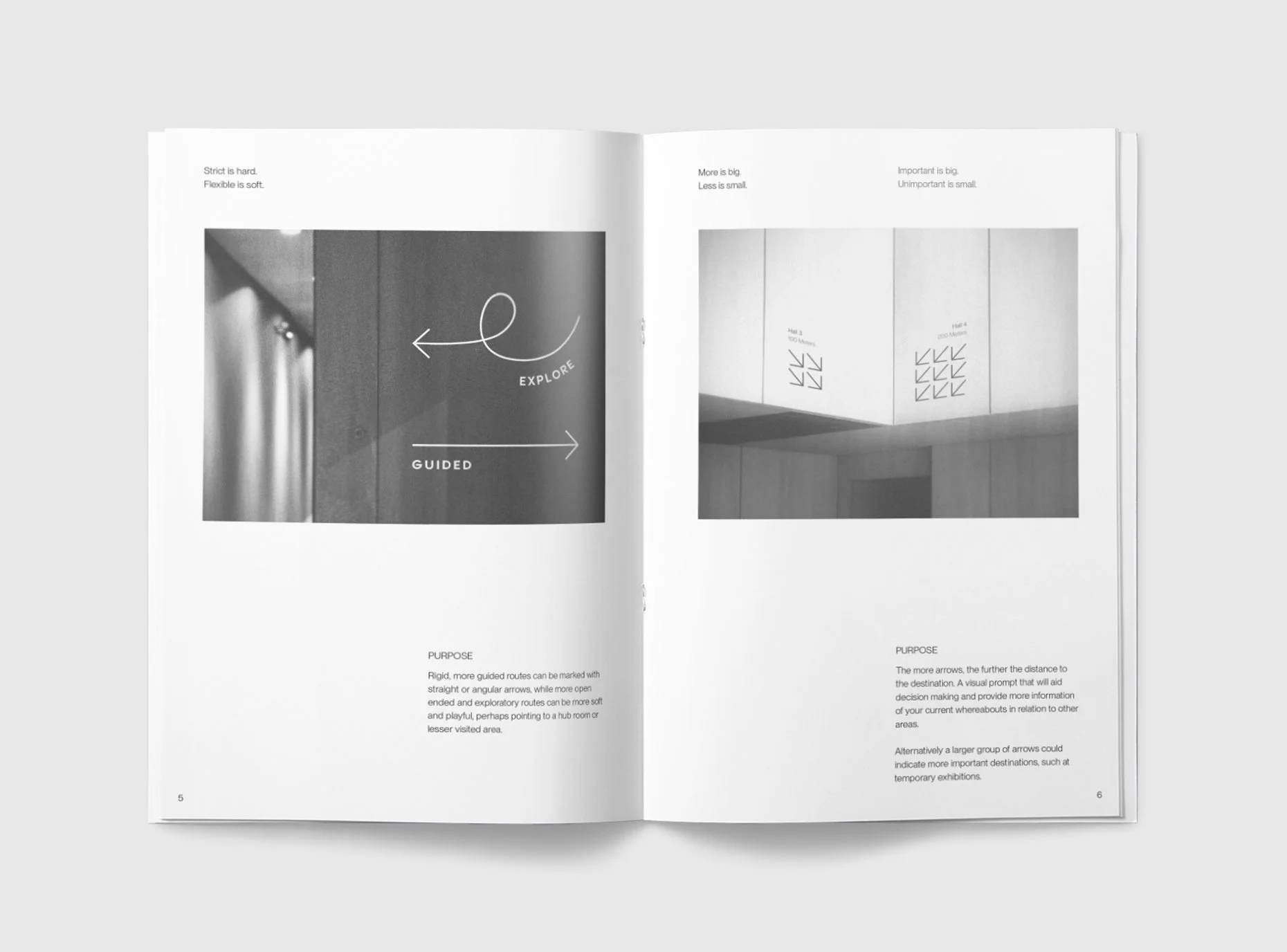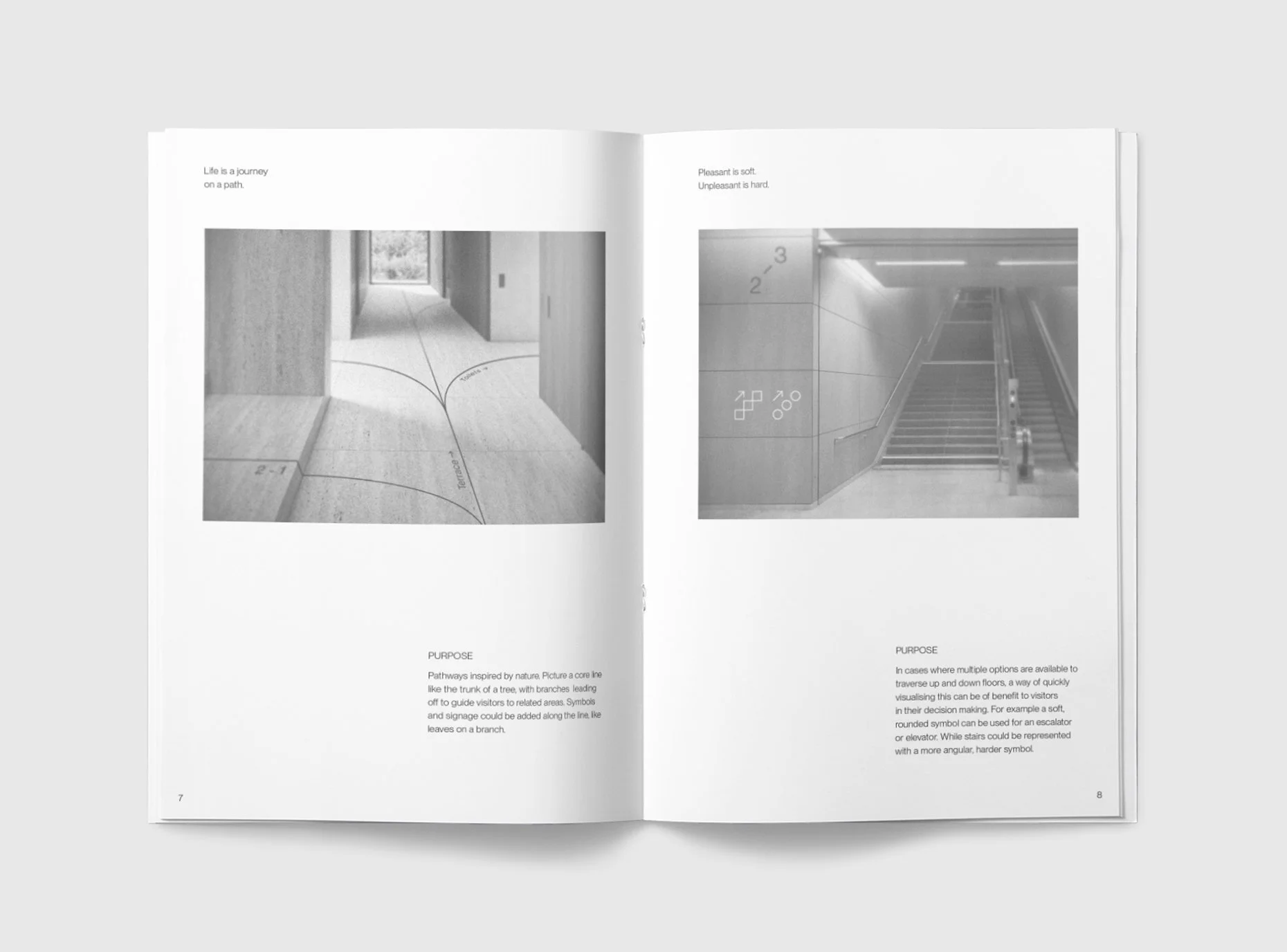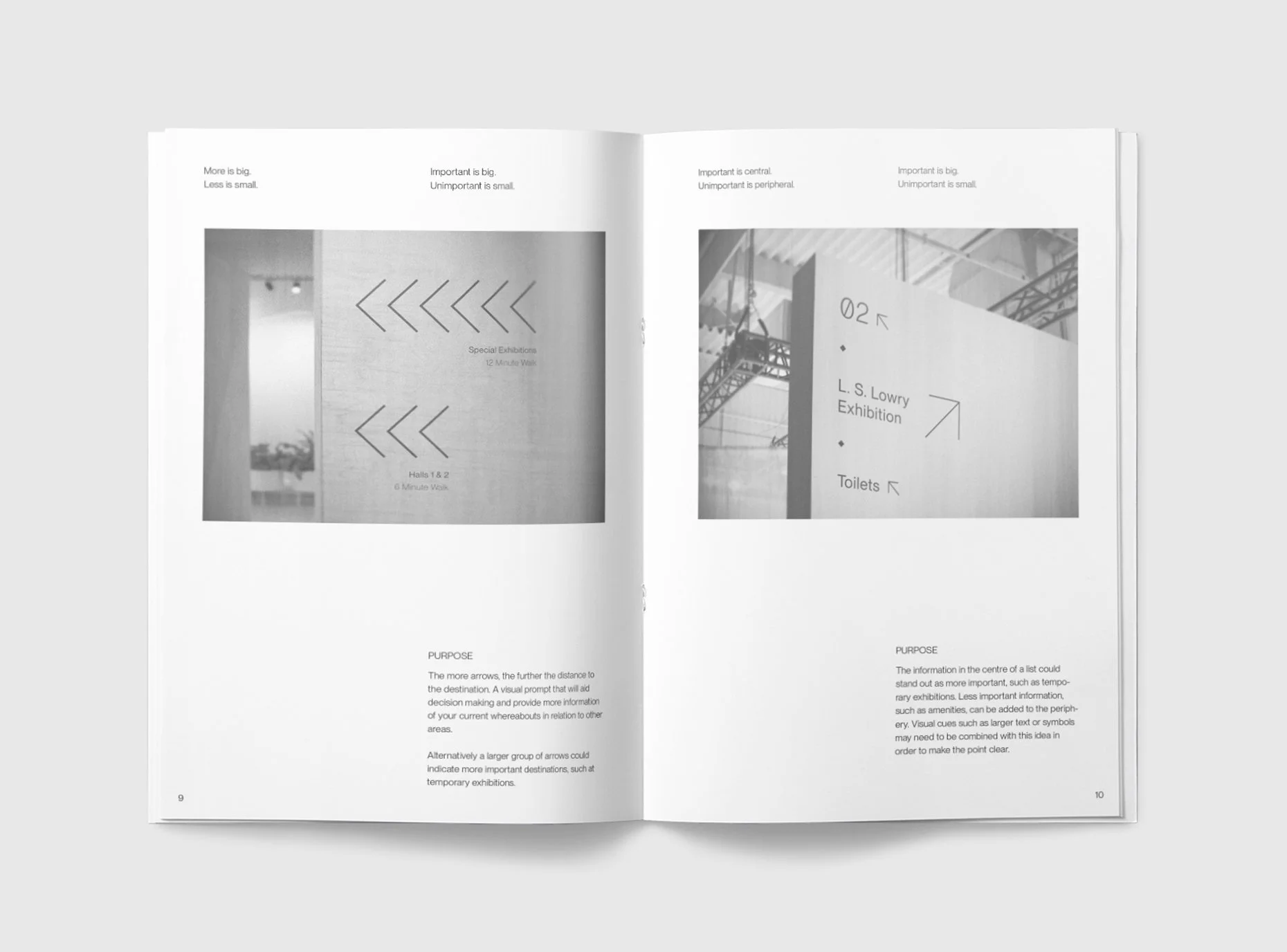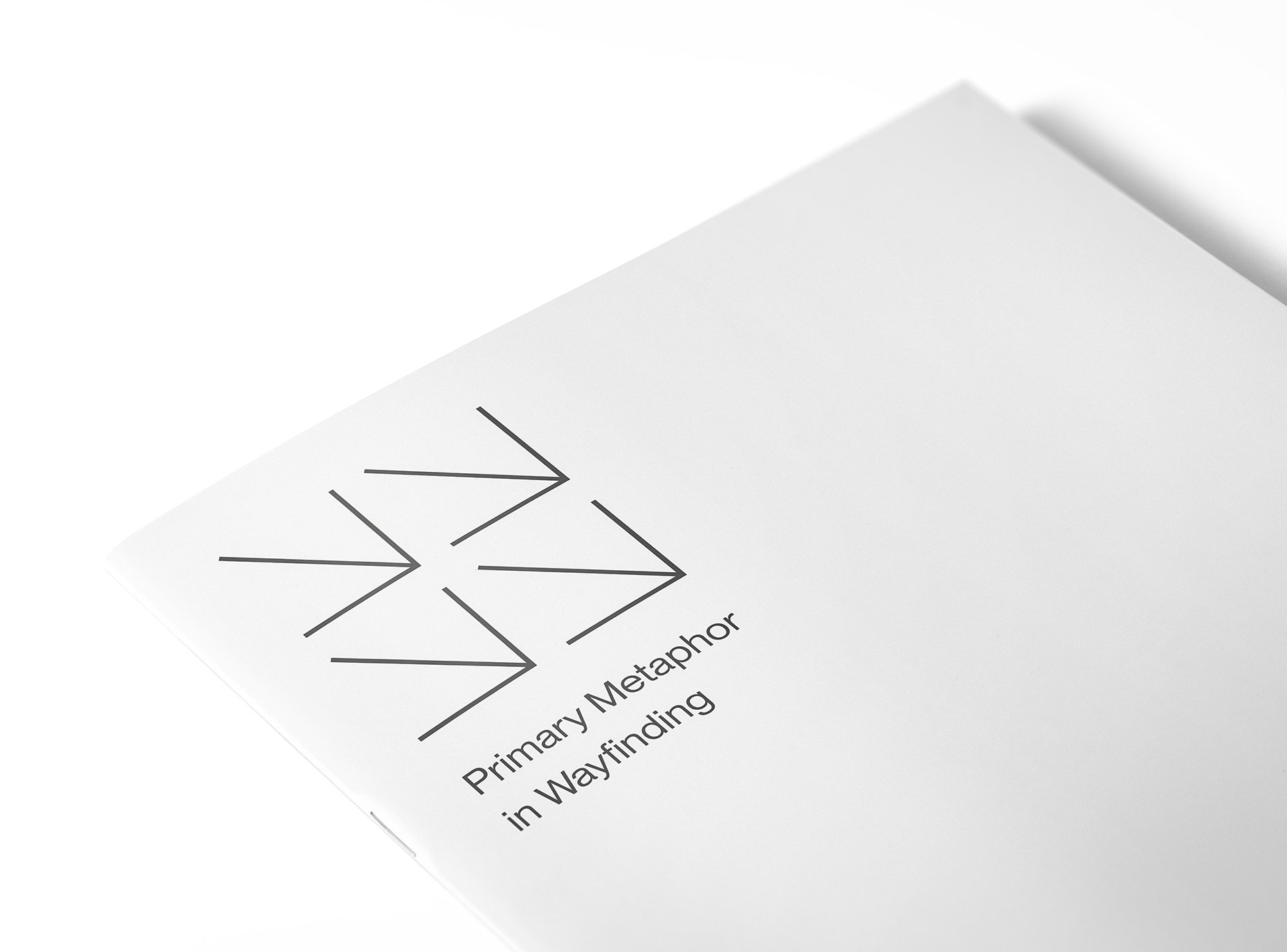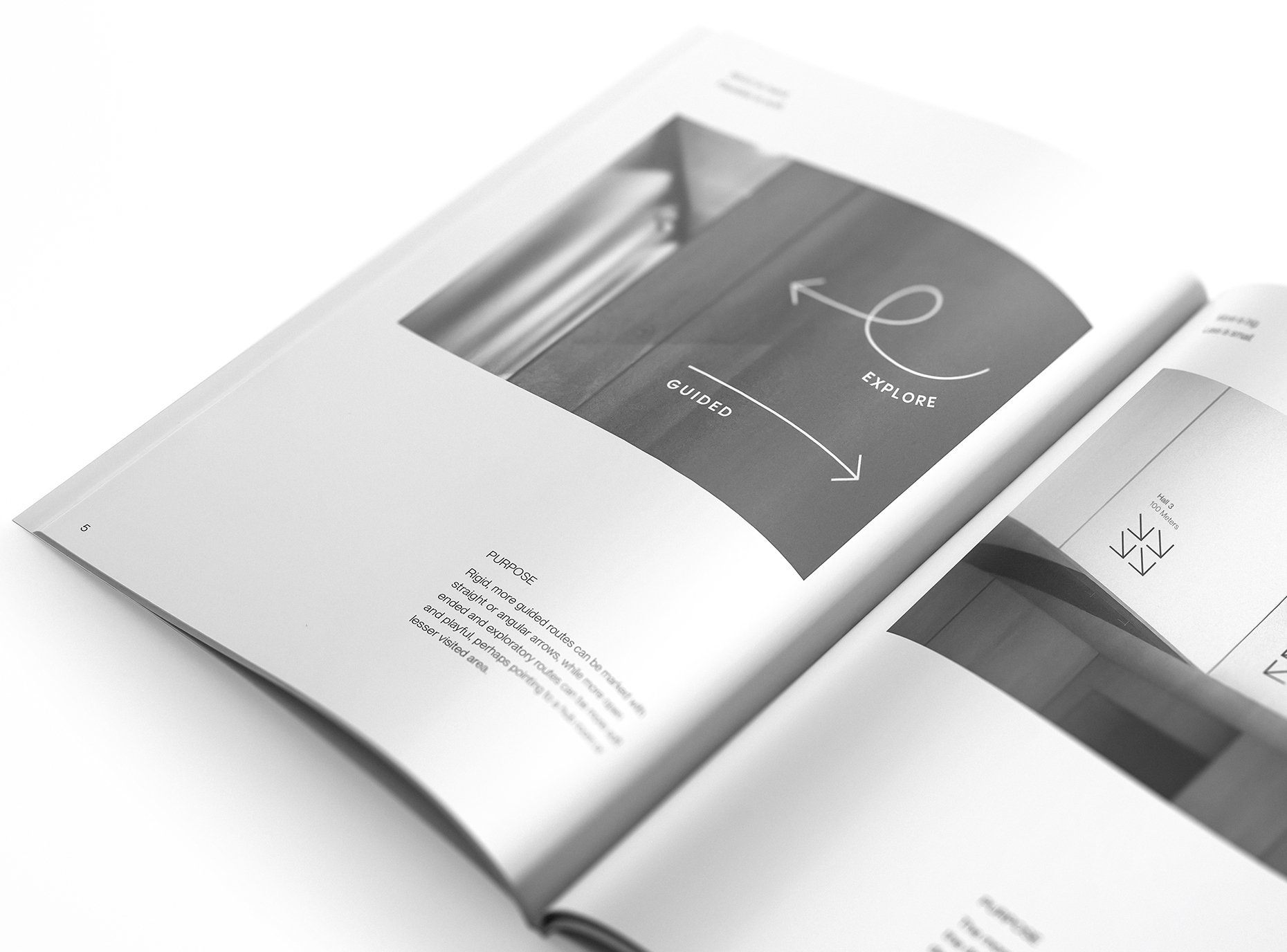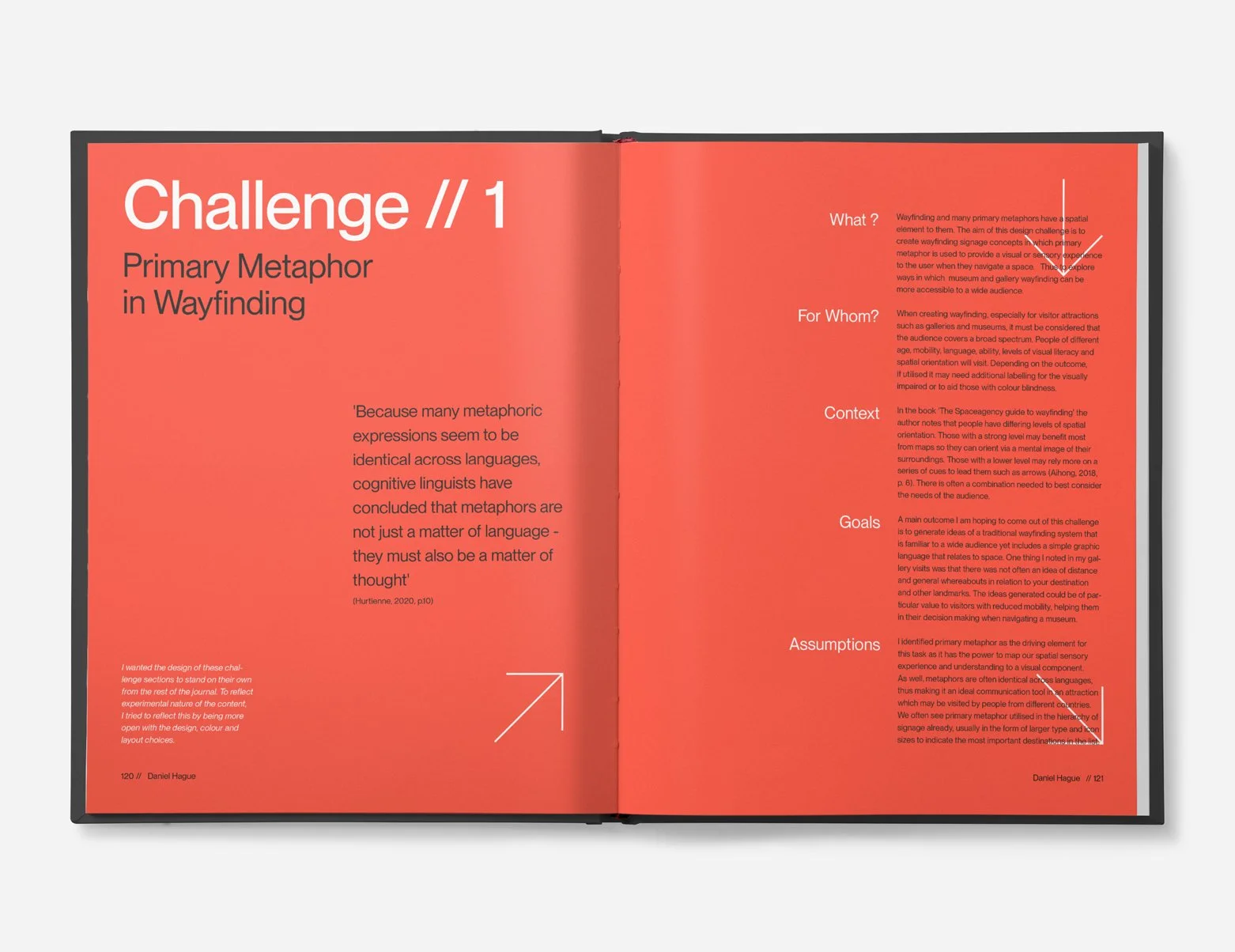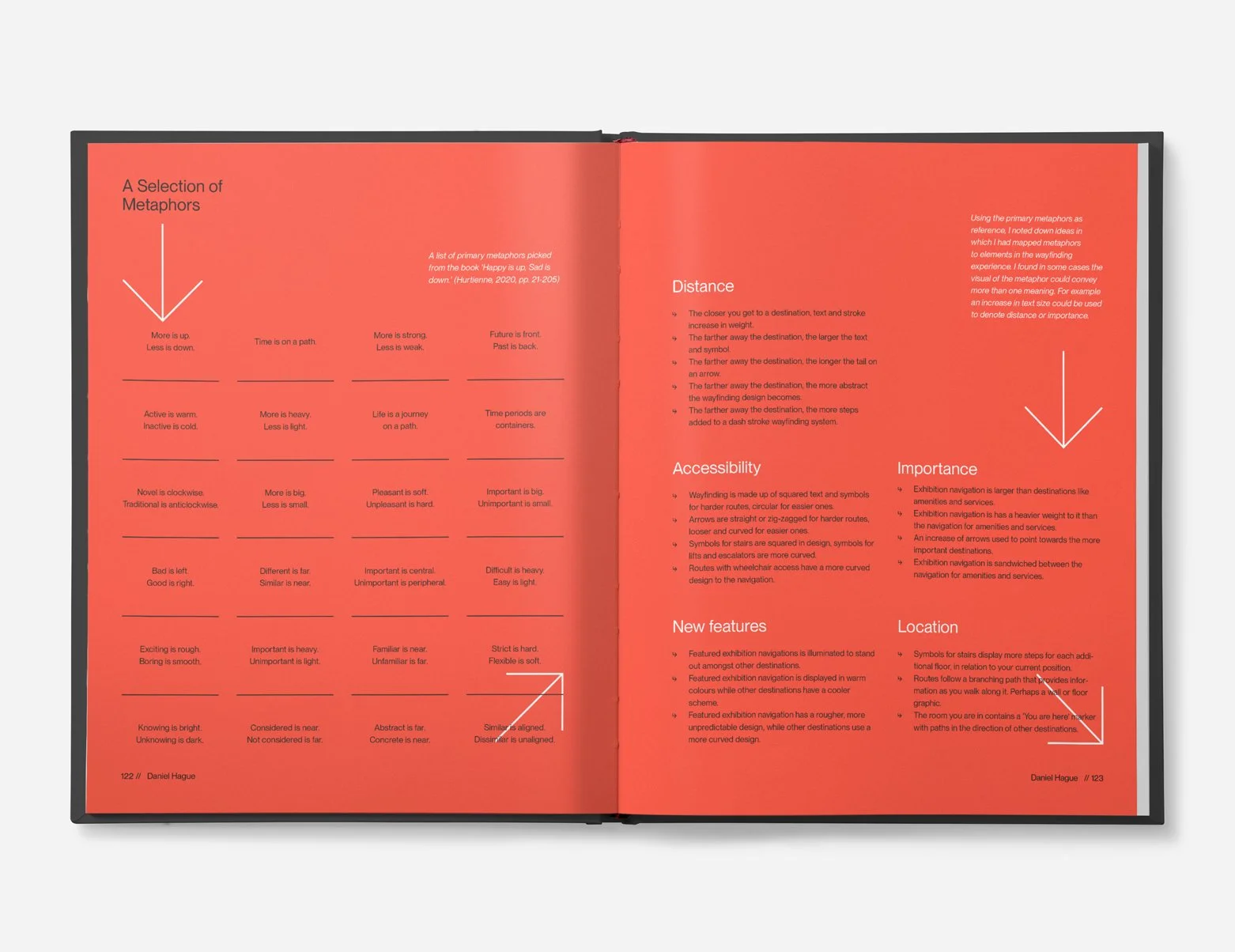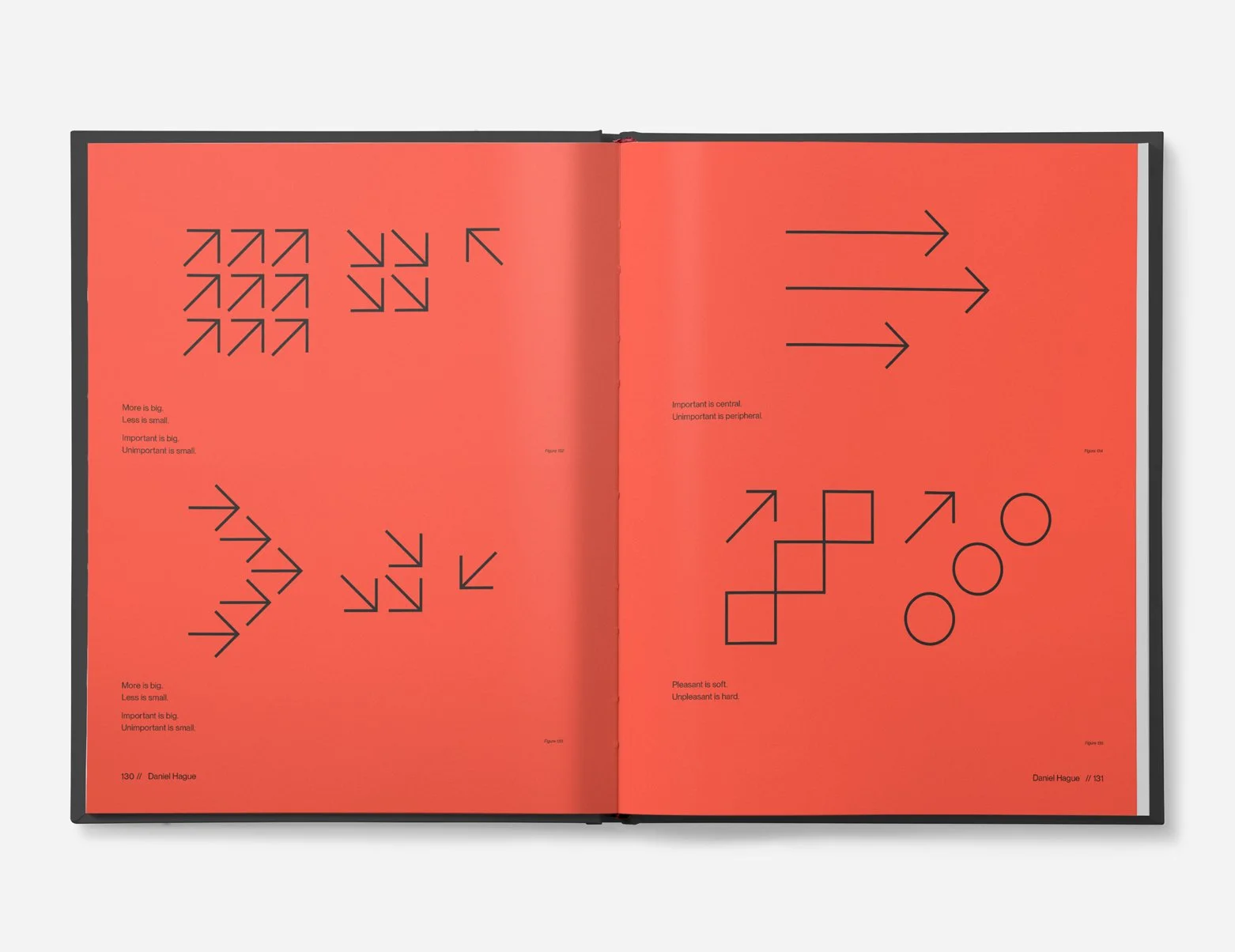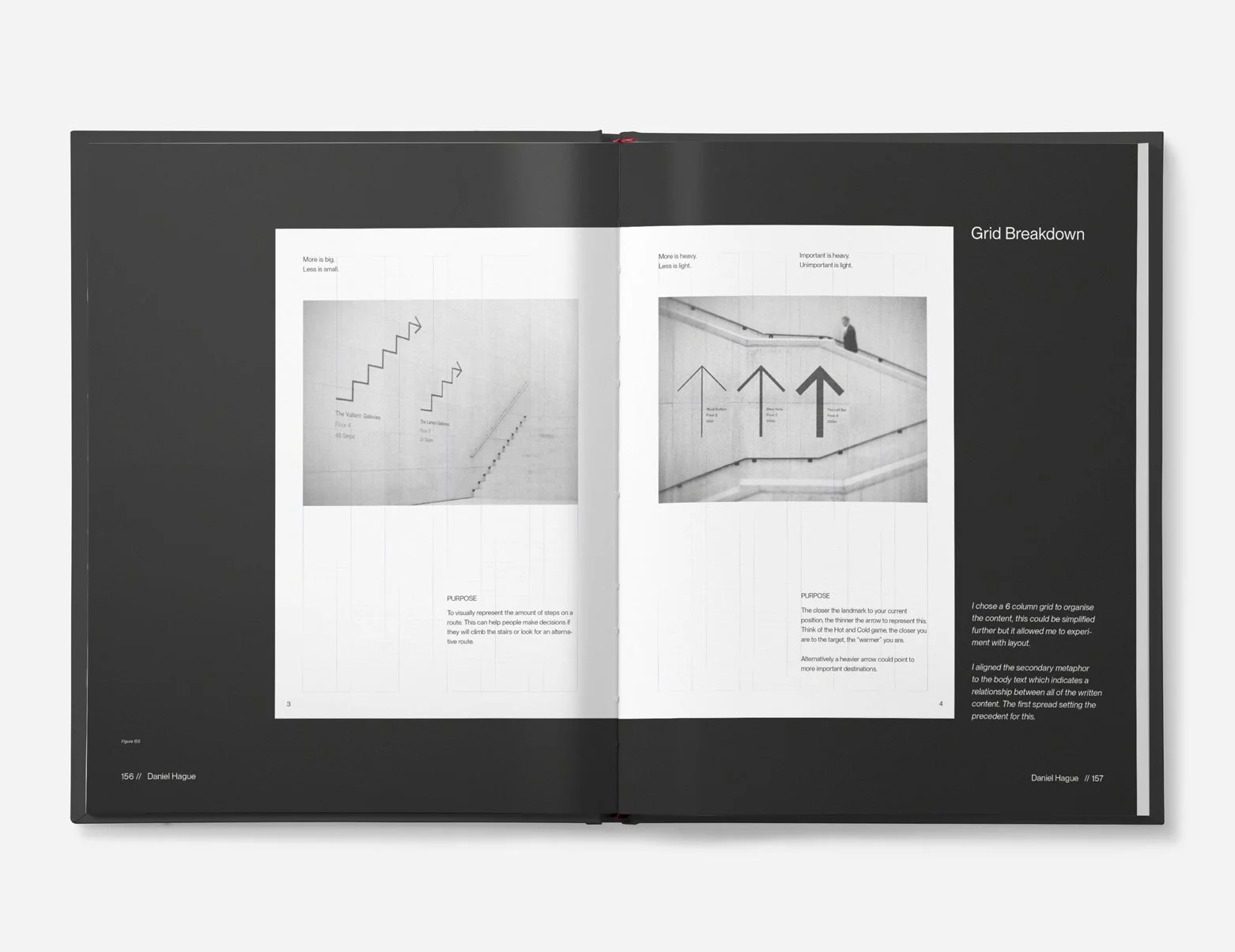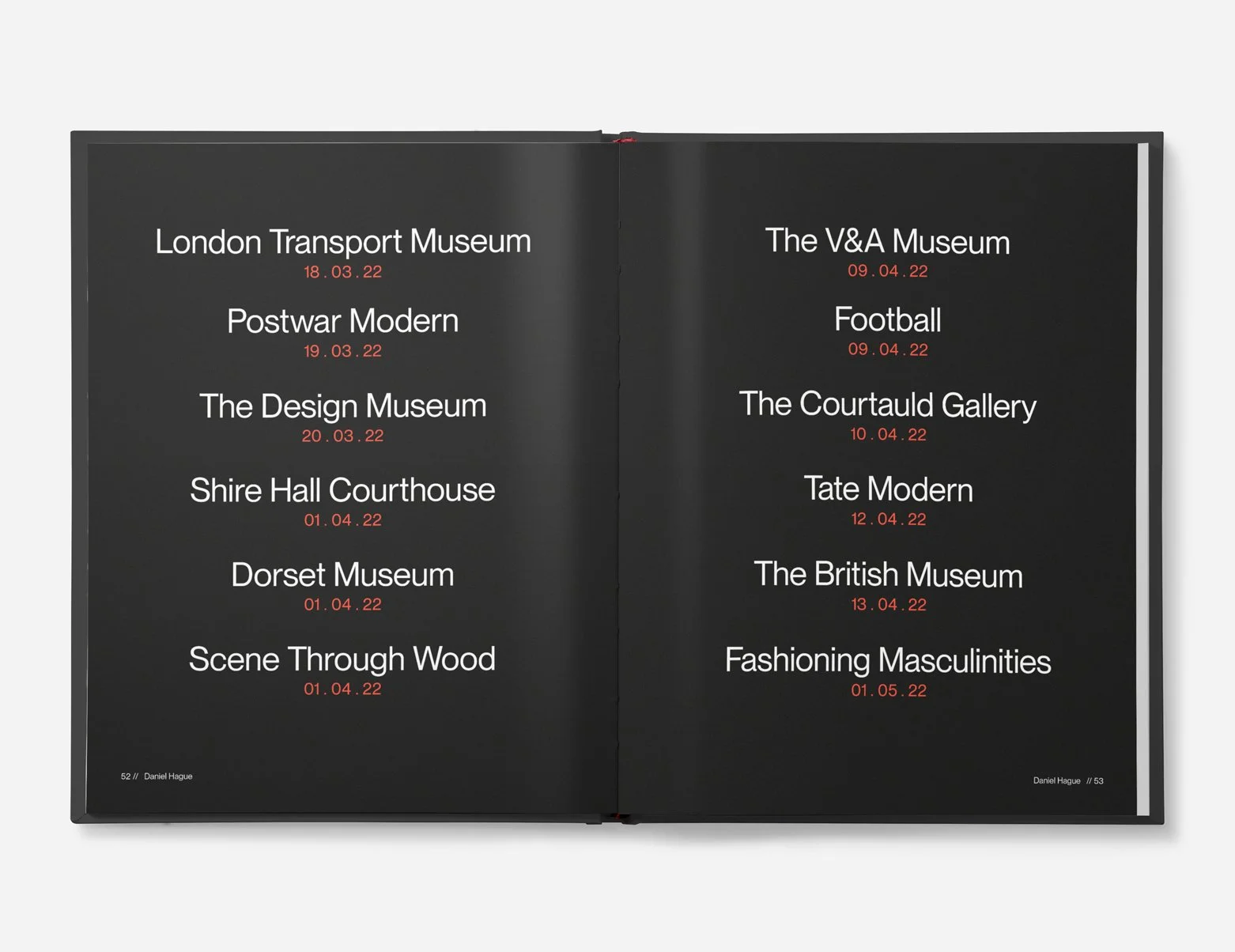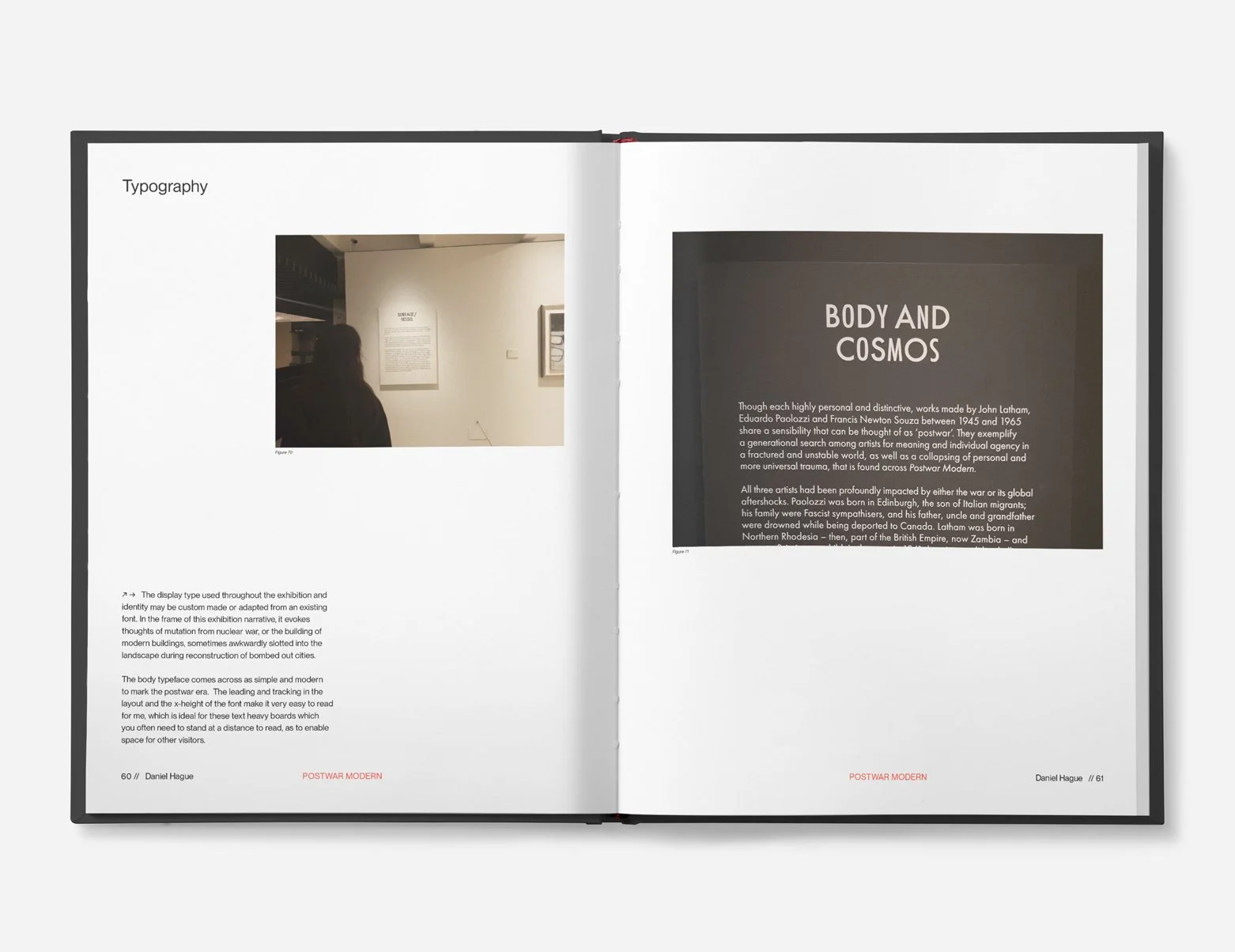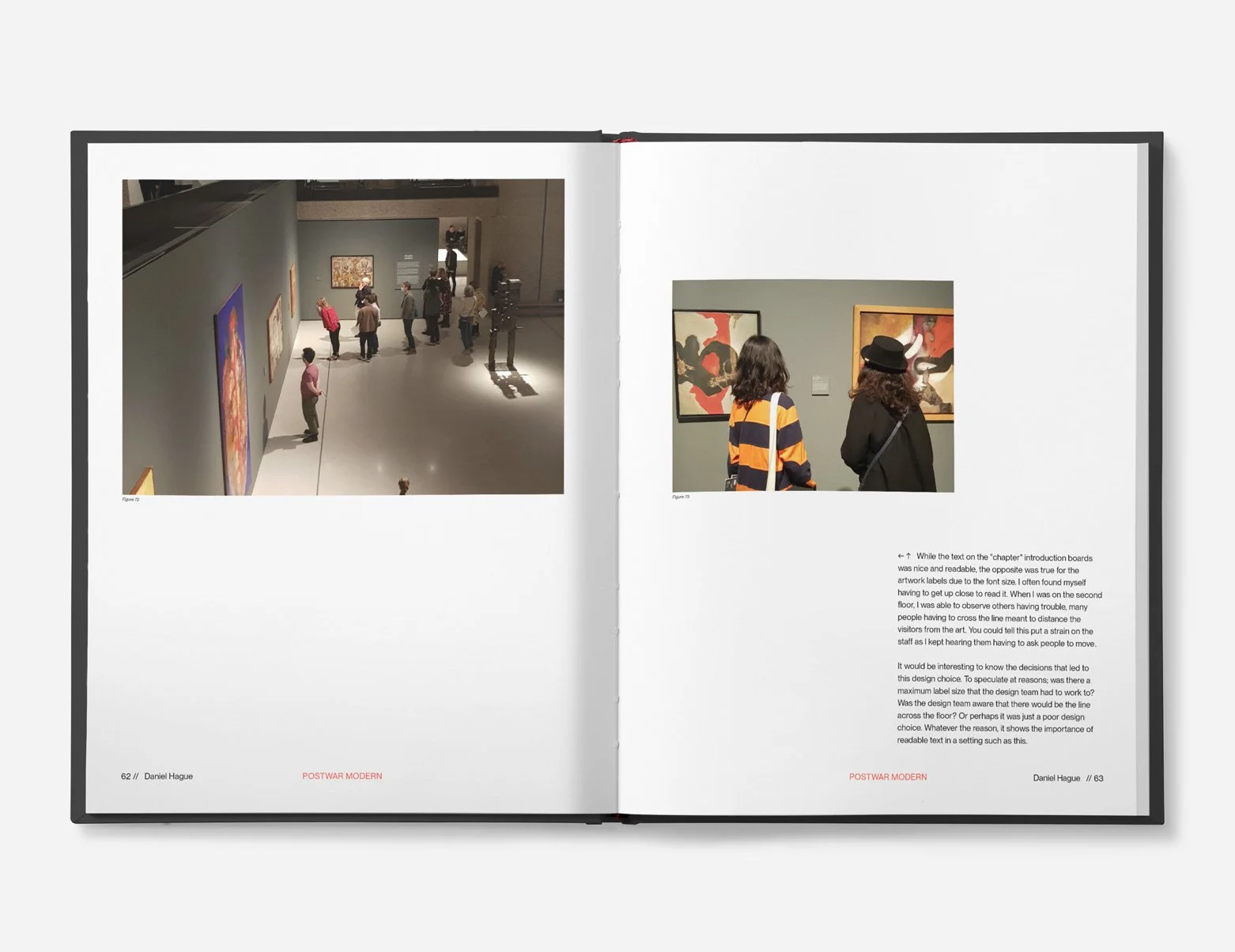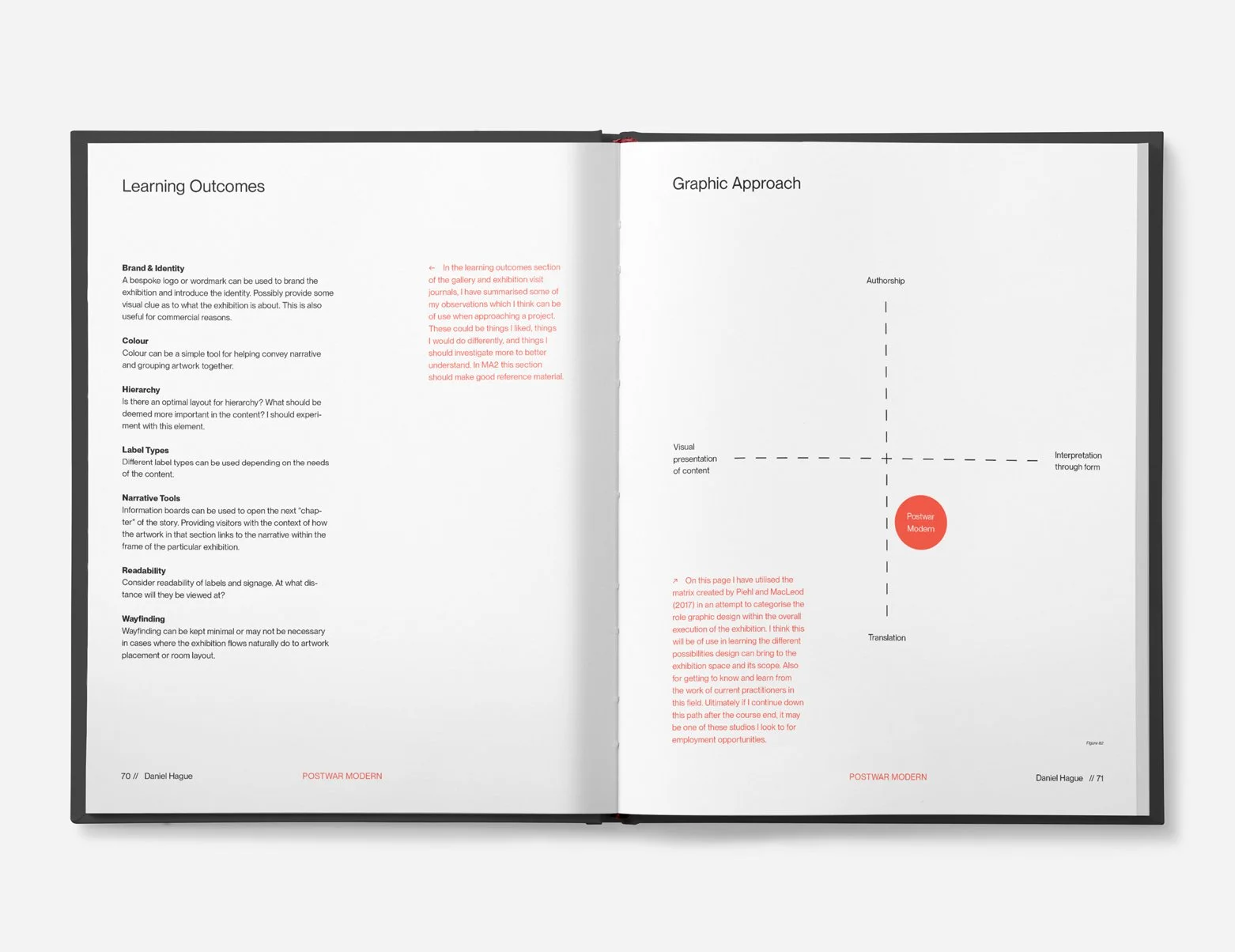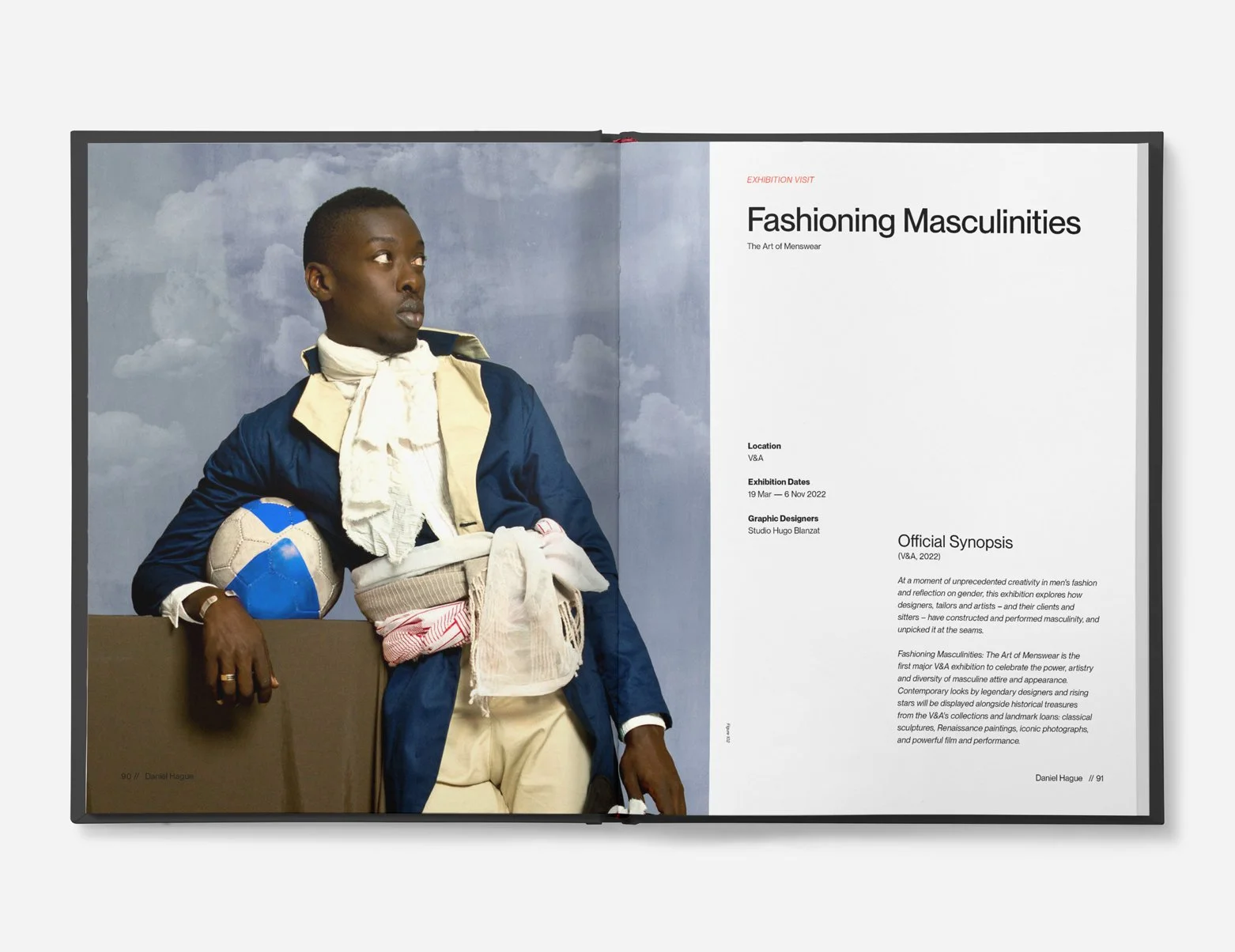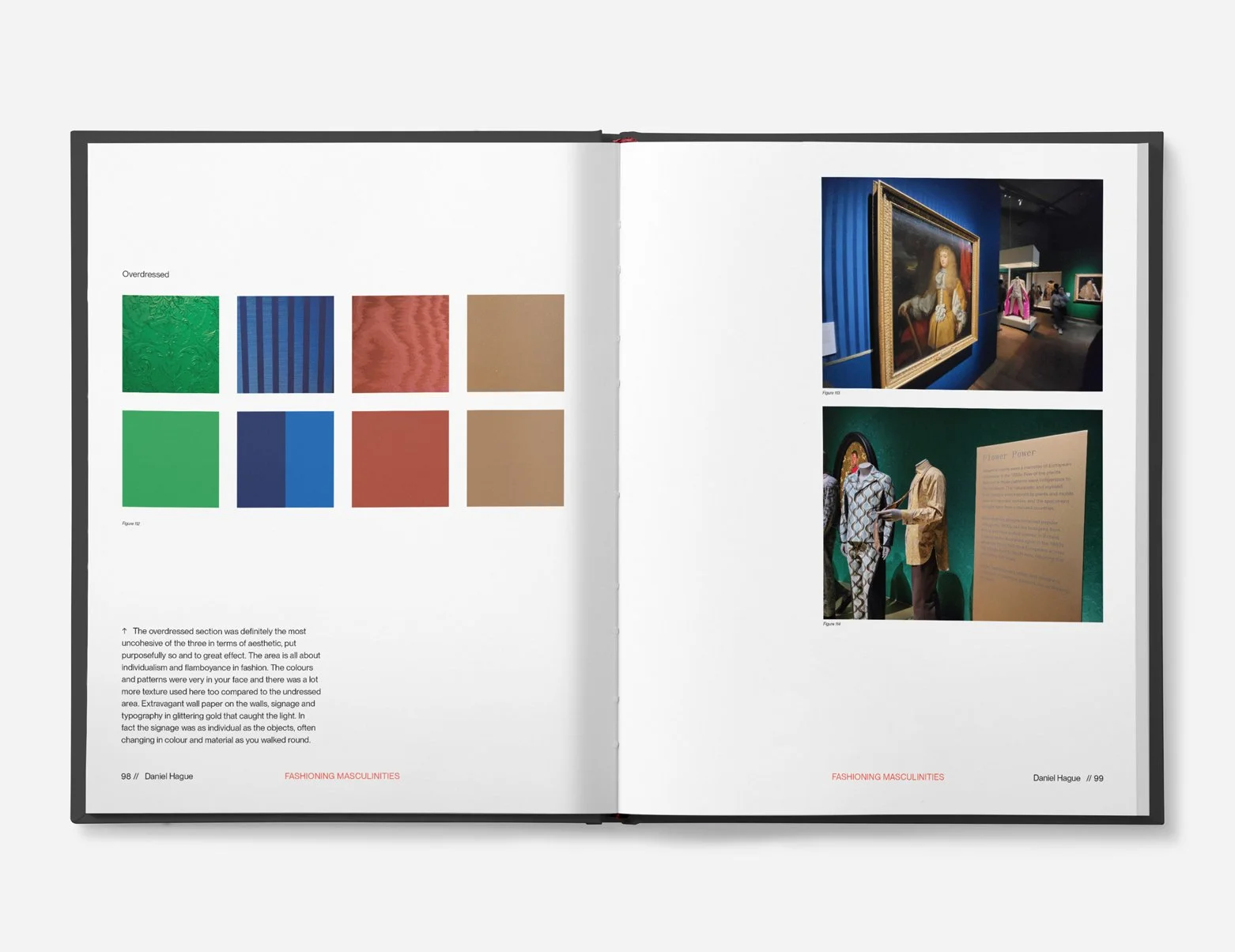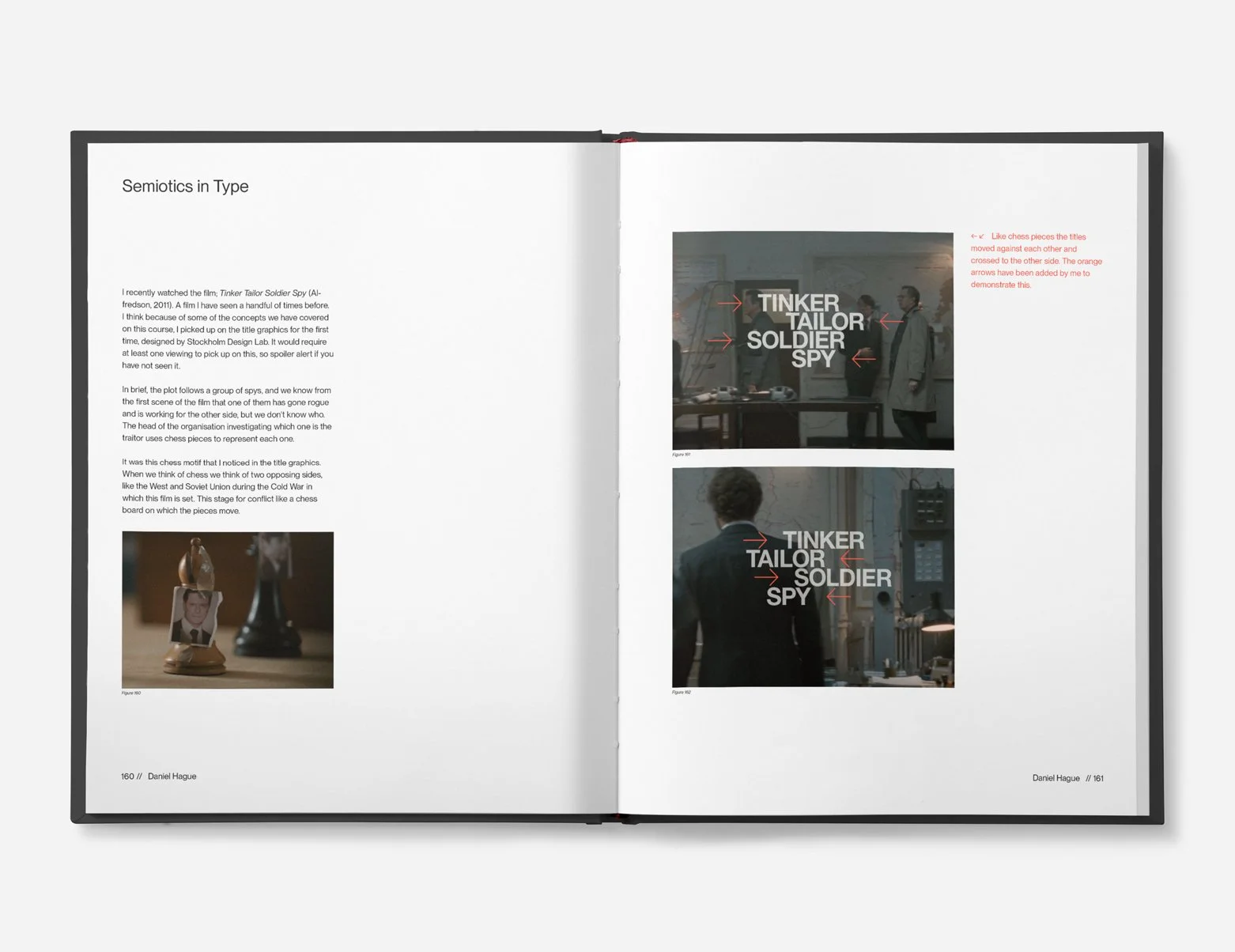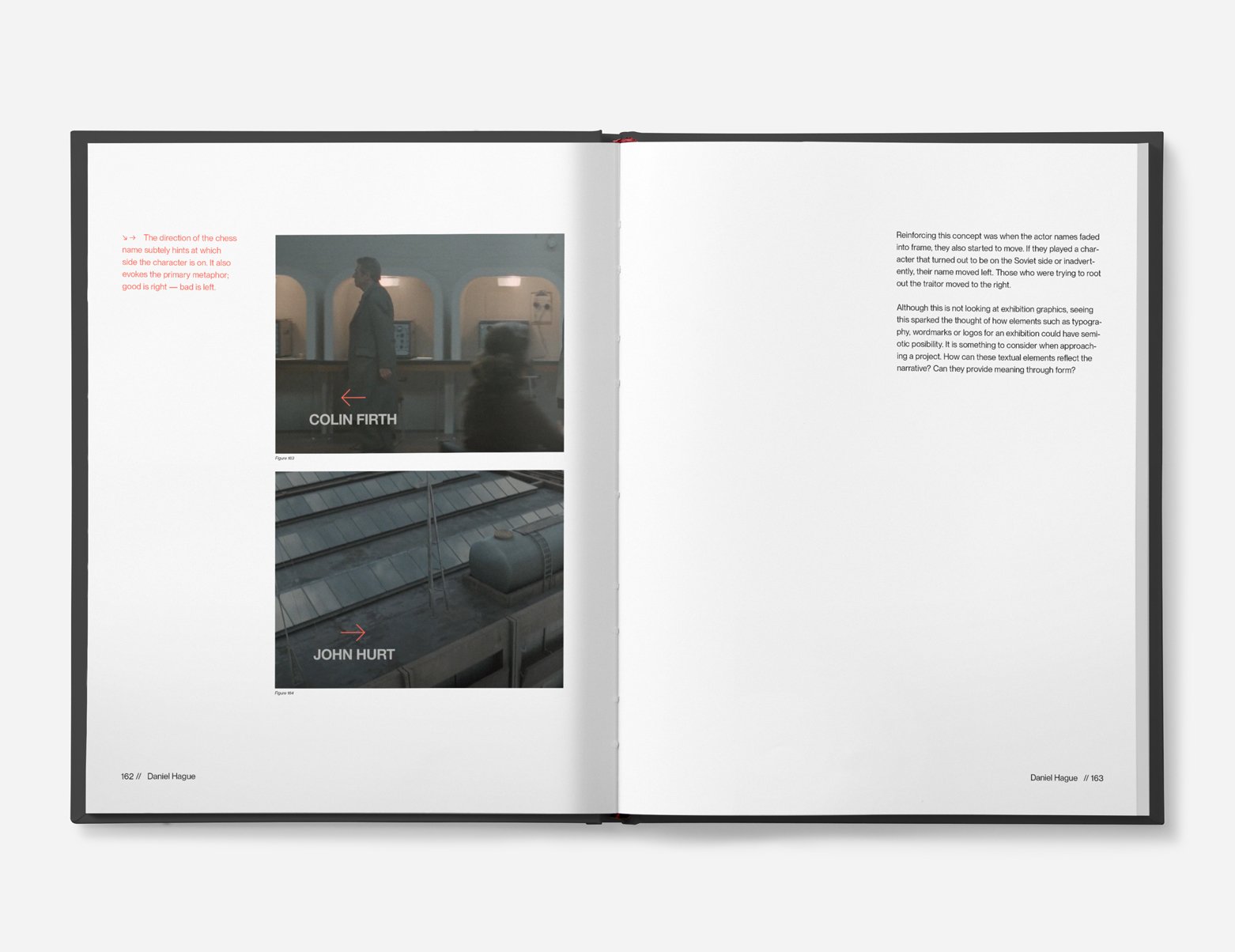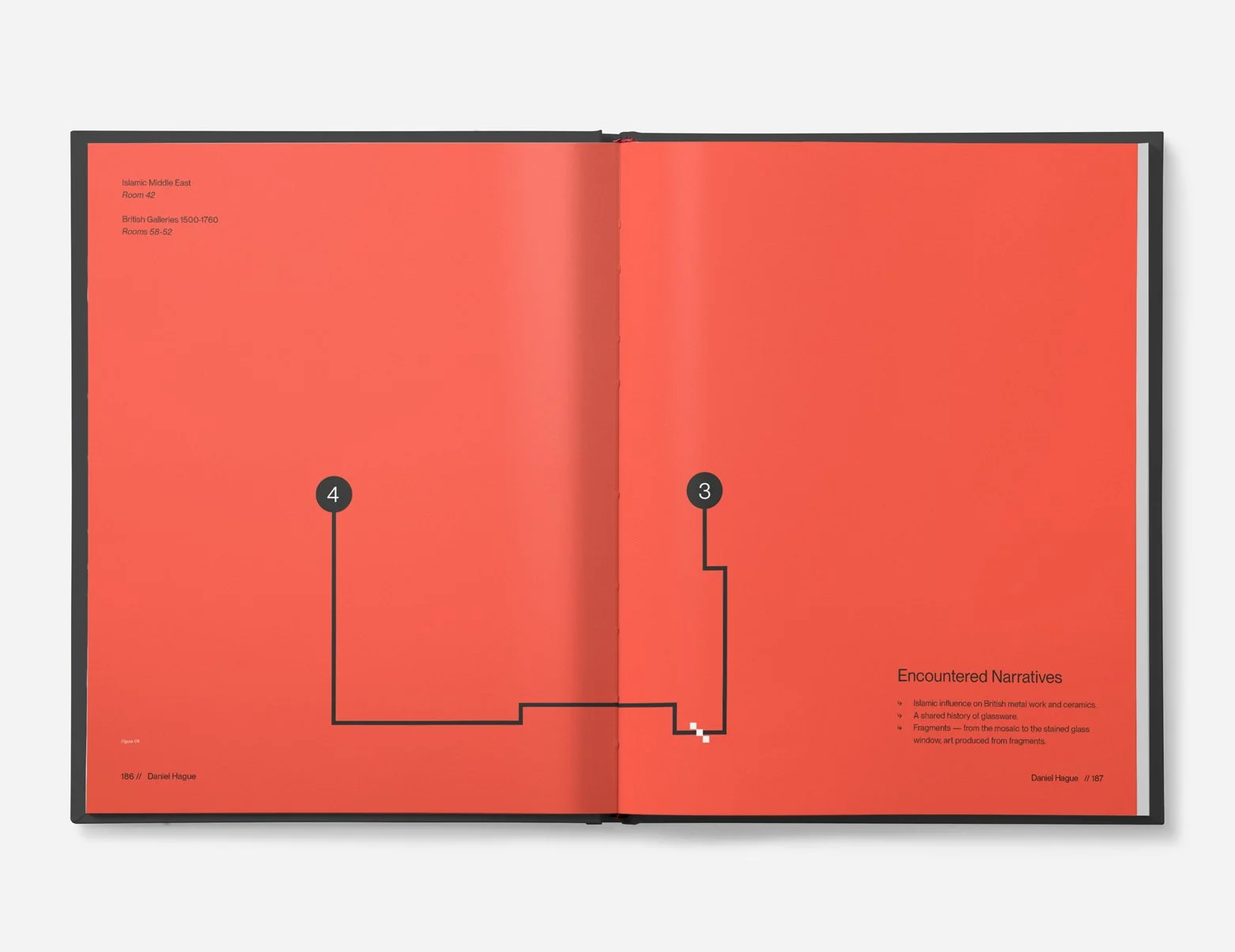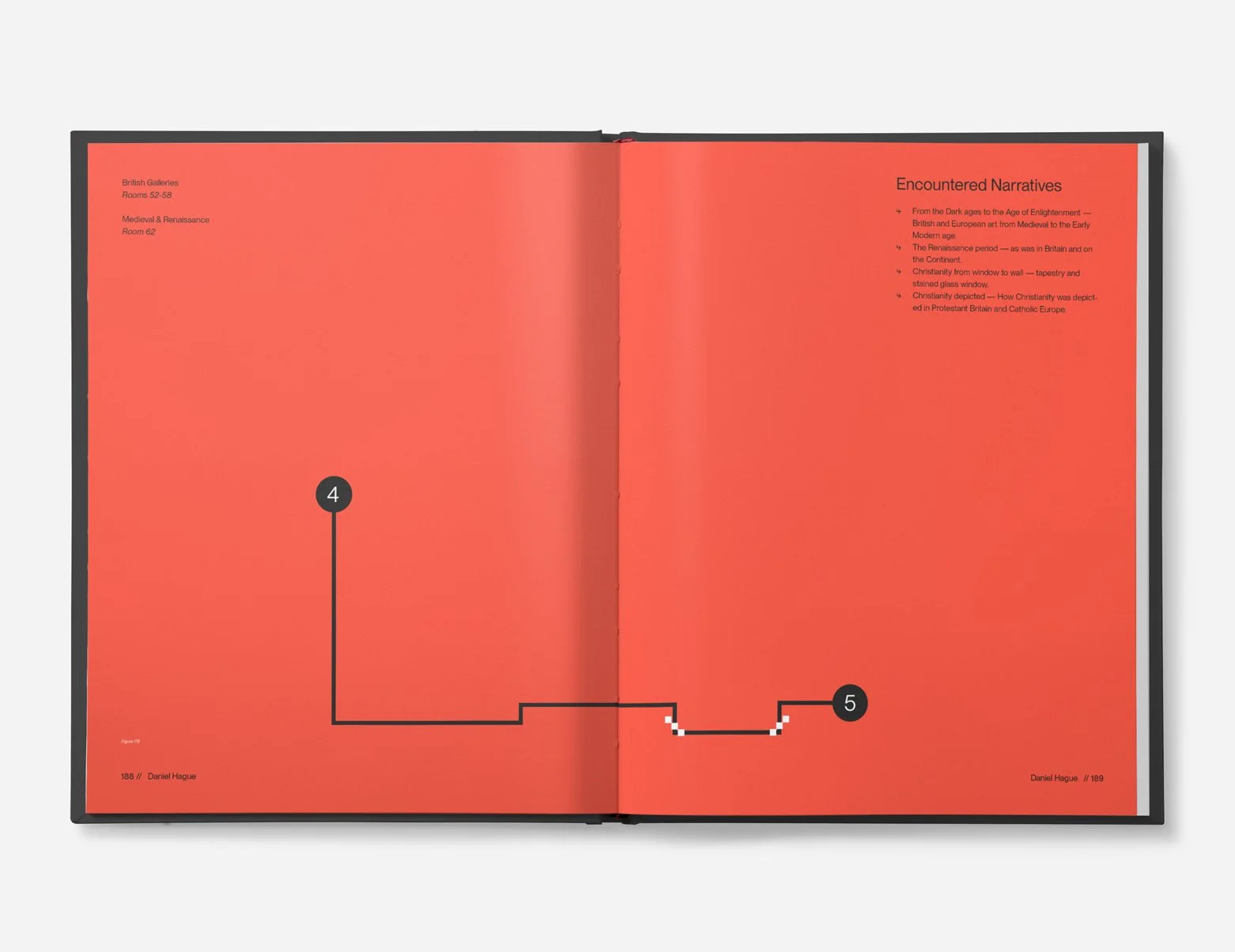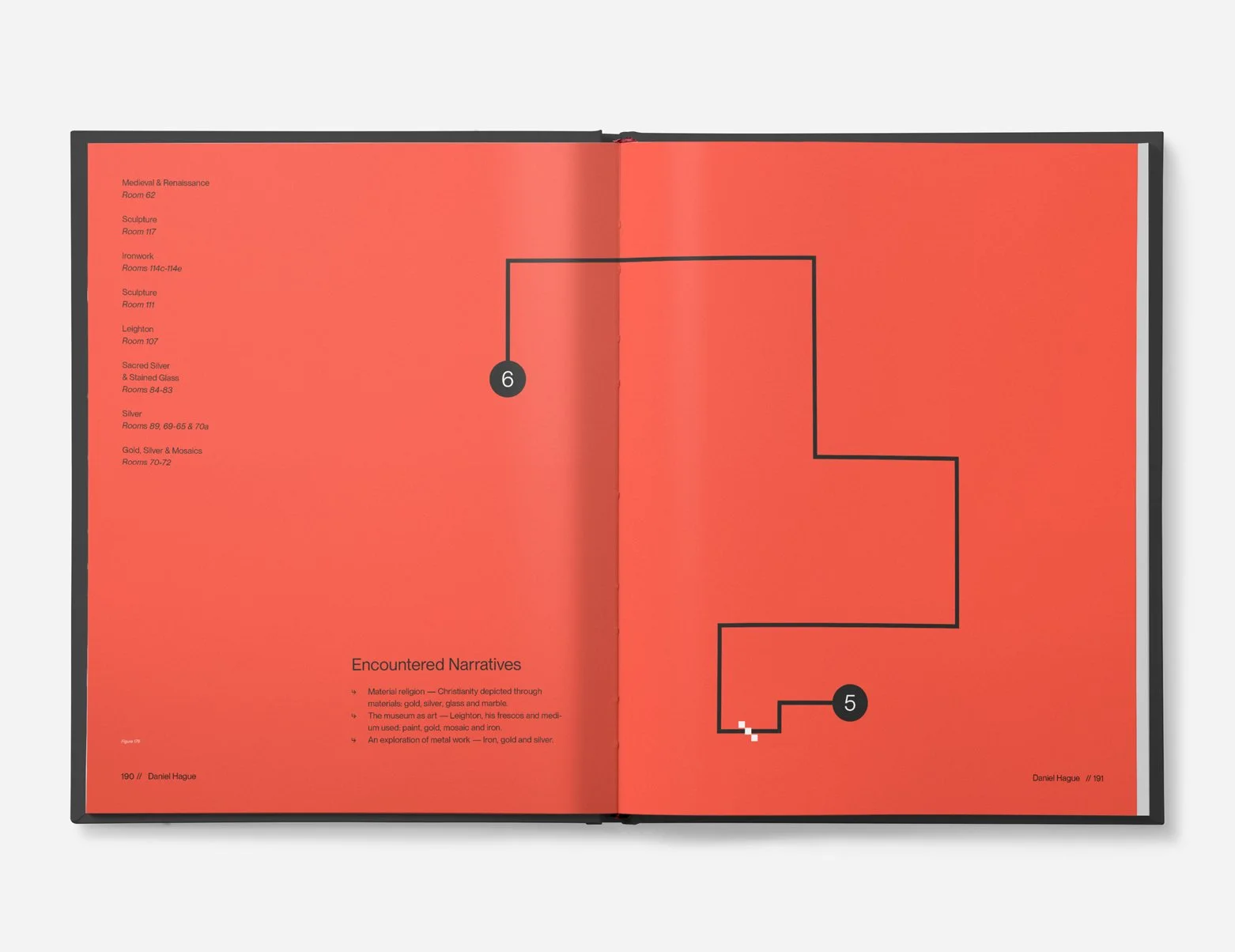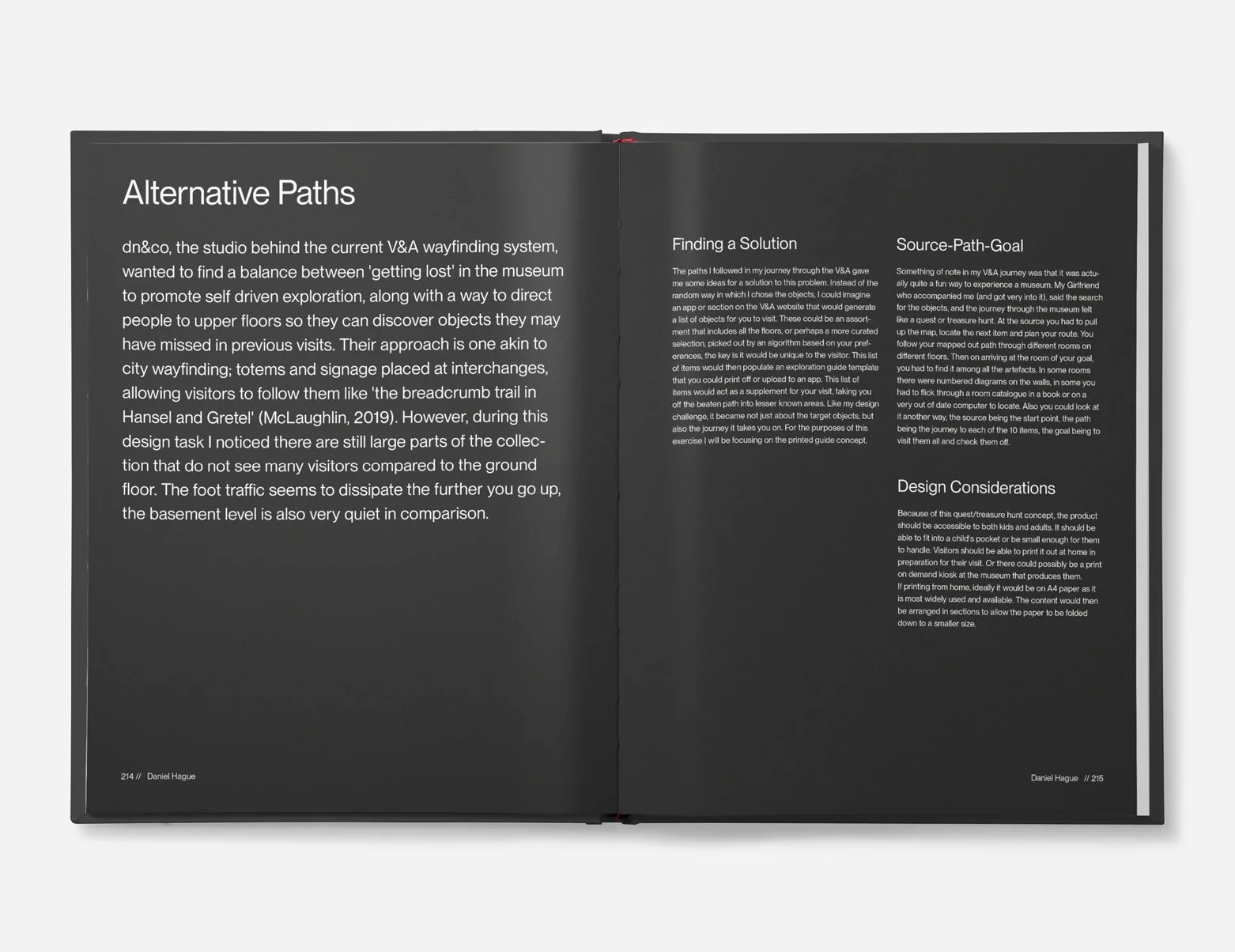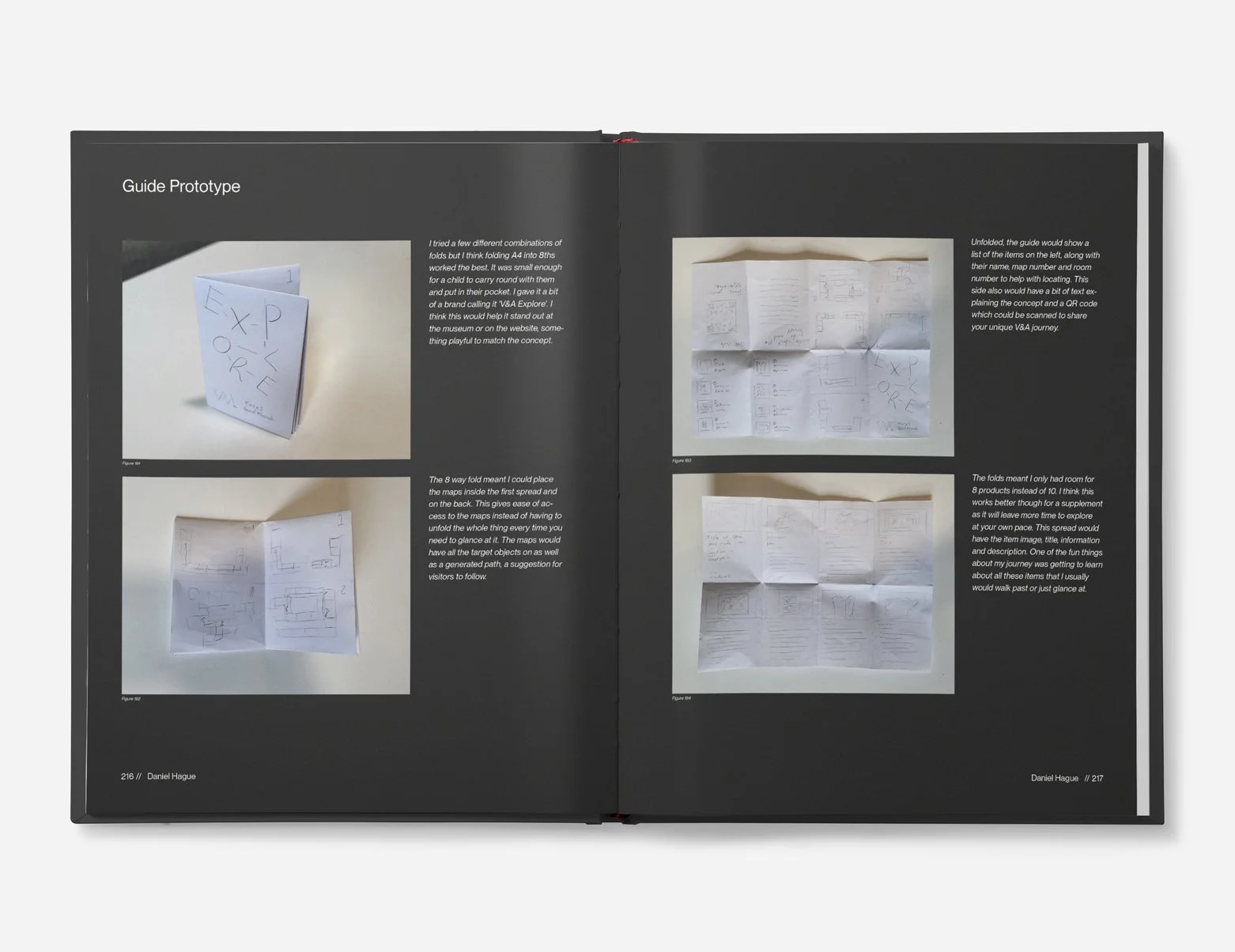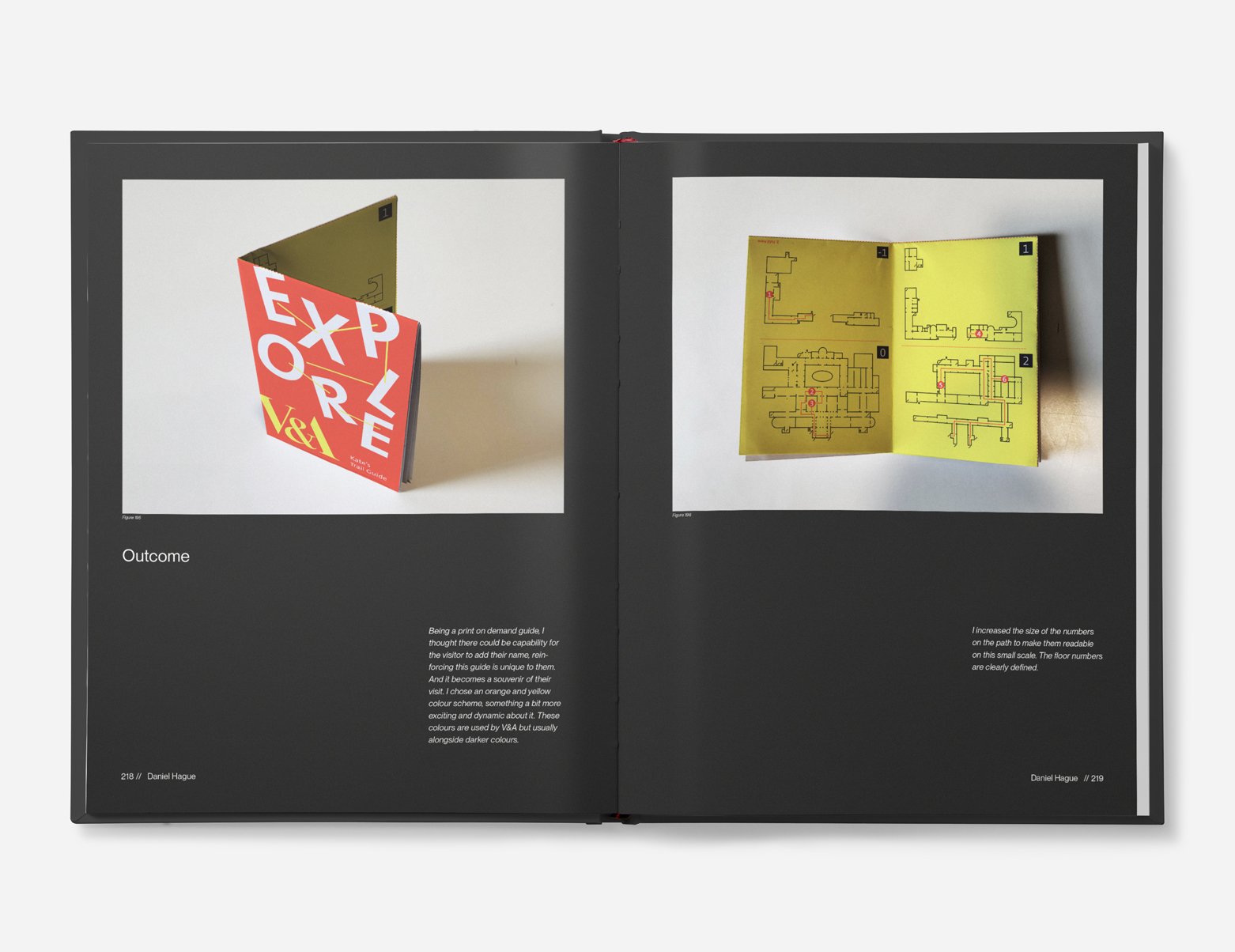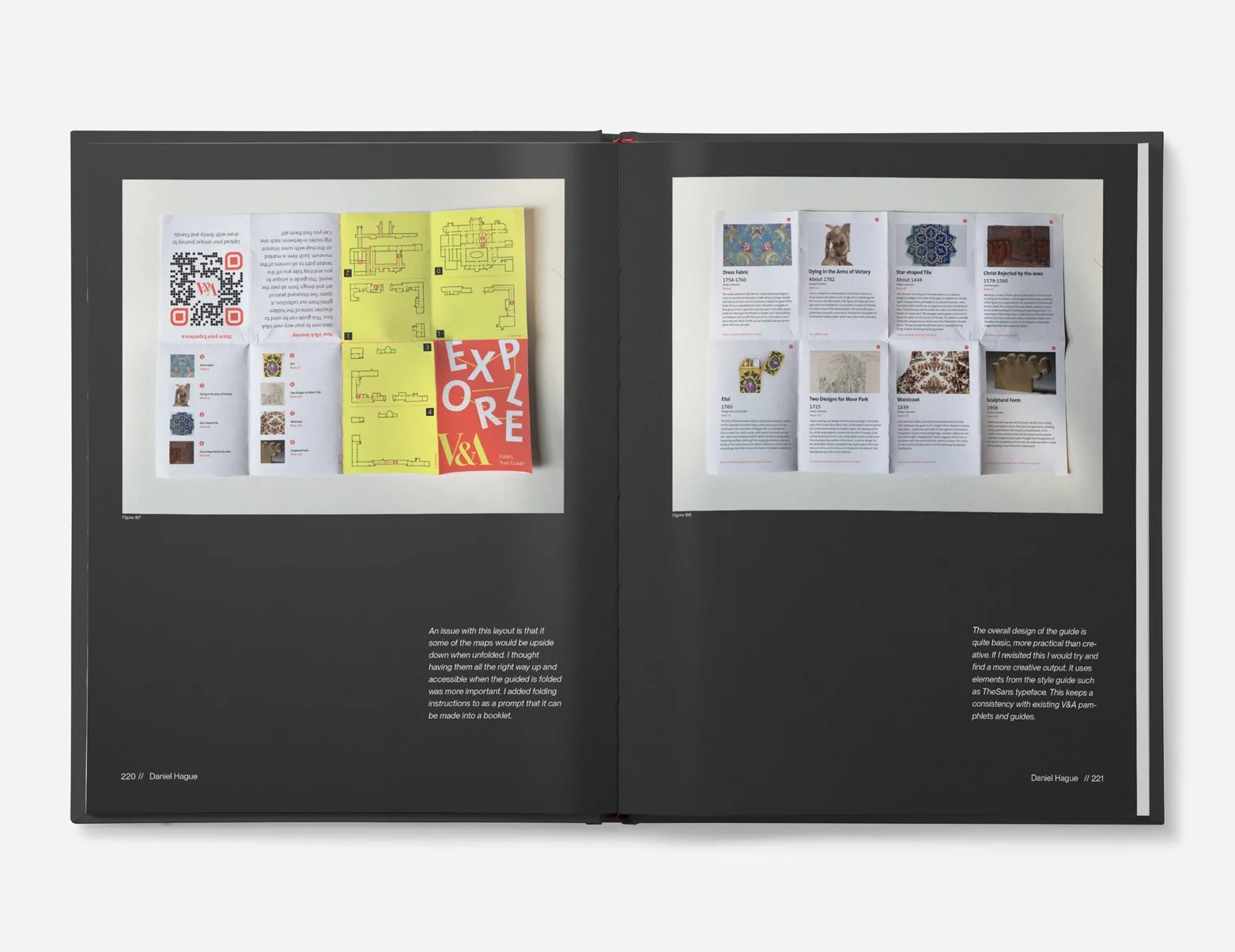Exhibition Graphics Research
The second unit of my Master’s degree was dedicated to research and experimentation of any topic of our choosing. An introduction to narrative and semiotics in design led me to focus my research on exhibition graphic design, wayfinding, and the visitor journey.
A series of mini-projects were conducted during this period as I took a broad approach to my research; documentation and processes were collected in a 280-page contextual journal. The first project drew on spatial elements projected through primary metaphors and applied them to simple wayfinding systems. The aim of this concept was to produce signage ideas that can convey spatial information integrated into the design, to help with visitor decision-making and provide increased universality.
During this research period, I visited a wide range of exhibitions, galleries, and museums. I treat these visits as a discovery task for myself, attempting to analyse every aspect of the designer’s role that I could find. These visits provided a great education into what still seems to be quite a niche and under-researched area of design. I recorded my observations in the contextual journal, to be used as reference material for my final project.
A defining aspect that interests me in exhibition graphics is how design can integrate with objects and artwork to help drive a narrative, like a book, there is such semiotic potential to be found. In this project, I tried to discover hidden narratives through a journey of the V&A, what stories could be found while walking from point A to point B? This experimentation led to a concept in which I prototyped a print-on-demand AI-curated explore guide which would be unique to each visitor. The guide was designed to be printed at home or at an in-house kiosk, providing the visitor with a range of routes and objects to seek out like a treasure hunt, driving them to parts of the museum that they may not have seen before.
